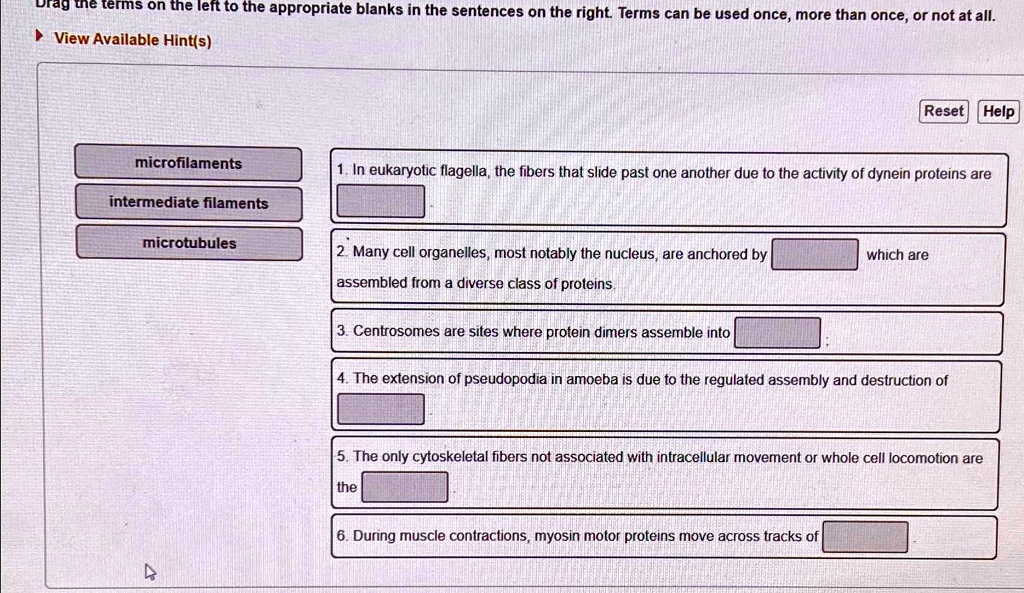Centrosomes: The Microtubule Organizing Centers
Deep within the heart of every cell lies a bustling hub known as the centrosome. This minuscule organelle plays a pivotal role in orchestrating cellular division, ensuring the even distribution of genetic material to daughter cells. At the center of this cellular machinery is a fascinating dance where protein dimers assemble into microtubules, the structural scaffolds that shape our cells.

Image: www.bartleby.com
Unveiling the secrets of centrosome biology holds profound implications for unraveling the mysteries of cell division, birth defects, and even cancer. Let us delve into this remarkable world, deciphering the intricate processes that govern the assembly of microtubule dimers within the centrosome.
The Genesis of Microtubules
Microtubules, long, slender protein filaments, form the cytoskeleton, providing shape and structural support to cells. They are composed of tubulin dimers, each dimer consisting of an α-tubulin and a β-tubulin protein. Like a molecular ballet, these dimers assemble and disassemble in a continuous cycle to determine the shape and movement of cells.
The Centrosome: Conductor of Microtubule Assembly
At the heart of this intricate dance lies the centrosome, a small but mighty organelle comprising two centrioles. Like tiny barrels, centrioles are composed of nine sets of microtubule triplets, serving as the primary nucleation sites for microtubule assembly.
Within the centrosome resides a reservoir of tubulin dimers, waiting to be incorporated into microtubules. A specialized protein complex known as γ-tubulin ring complex (γ-TuRC) acts as the gateway, facilitating the addition of tubulin dimers to the growing microtubules.
The Anatomy of Microtubule Assembly
Microtubule assembly is characterized by two distinct phases: nucleation and elongation.
Nucleation: This initial phase involves the formation of a highly stable tubulin ring, which serves as the foundation for microtubule growth. The γ-TuRC binds to the minus end of a growing microtubule, stabilizing it and protecting it from disassembly.
Elongation: Once a stable microtubule nucleus is established, tubulin dimers rapidly assemble onto the plus end, elongating the microtubule. Dimers are continuously added and removed, allowing microtubules to grow, shrink, and reorganize in response to cellular needs.

Image: www.numerade.com
The Polarization of Microtubules
Interestingly, microtubules exhibit a polarity, meaning they have distinct plus and minus ends. The minus end, often anchored at the centrosome, acts as the nucleation and stability center. In contrast, the plus end is dynamic and explores the cellular landscape, allowing the microtubule to interact with other cellular components.
Microtubules: Versatile Players
Microtubules are instrumental in a multitude of cellular processes, including mitosis, cell division, cell movement, and intracellular transport. During mitosis, microtubules form the mitotic spindle, which segregates chromosomes equally to daughter cells. In cell migration, microtubules serve as tracks for motor proteins that power cellular movement.
Centrosome Dysfunction: A Path to Disease
Given their critical role in cellular function, centrosome dysfunction can have profound consequences. Abnormalities in centrosome number or function have been associated with birth defects and various human diseases, particularly cancer.
In cancer cells, centrosome amplification and dysfunction are common occurrences. Disrupted microtubule assembly and chromosome segregation contribute to chromosomal instability, a hallmark of cancer cells.
Tackling Centrosome Dysfunction
Harnessing our knowledge of centrosome biology and microtubule assembly offers avenues for treating centrosome-associated diseases. Researchers are exploring the development of novel therapies targeting the centrosome, with the aim of preventing or countering cancer progression.
Centrosomes Are Sites Where Protein Dimers Assemble Into
Conclusion
The centrosome is a remarkable cellular orchestra, where the complex assembly of microtubule dimers underpins the intricate workings of our cells. Unveiling the mysteries of centrosome biology empowers us to understand the very essence of life and chart new paths toward innovative treatments for devastating diseases.